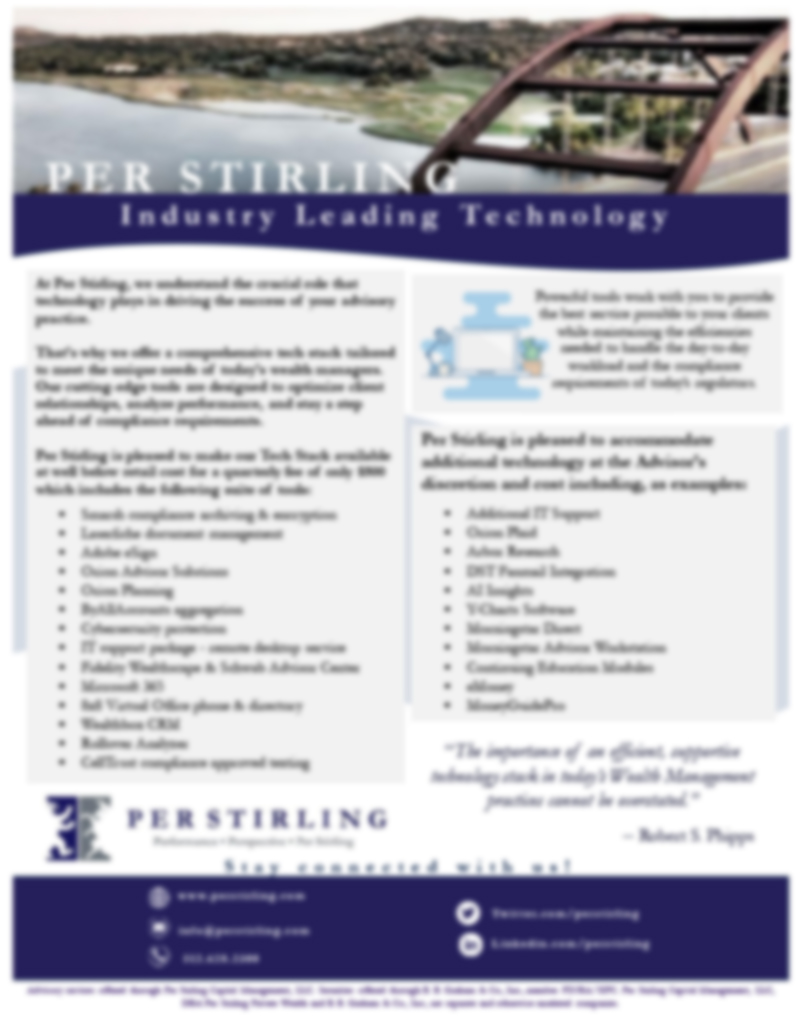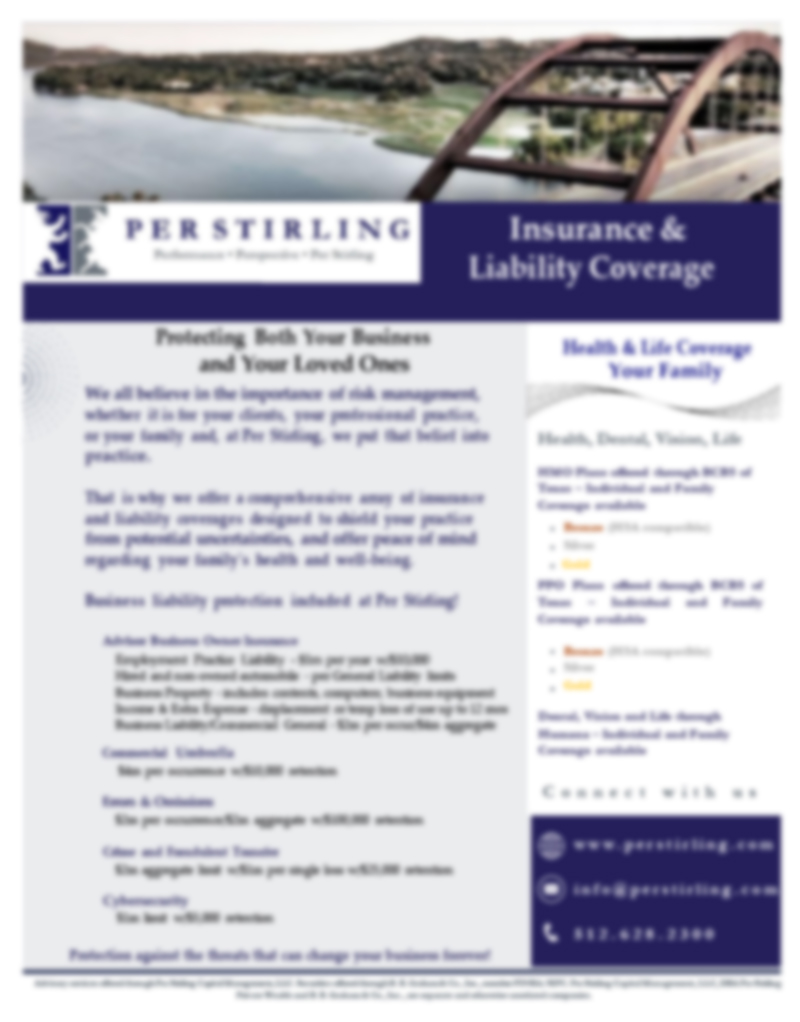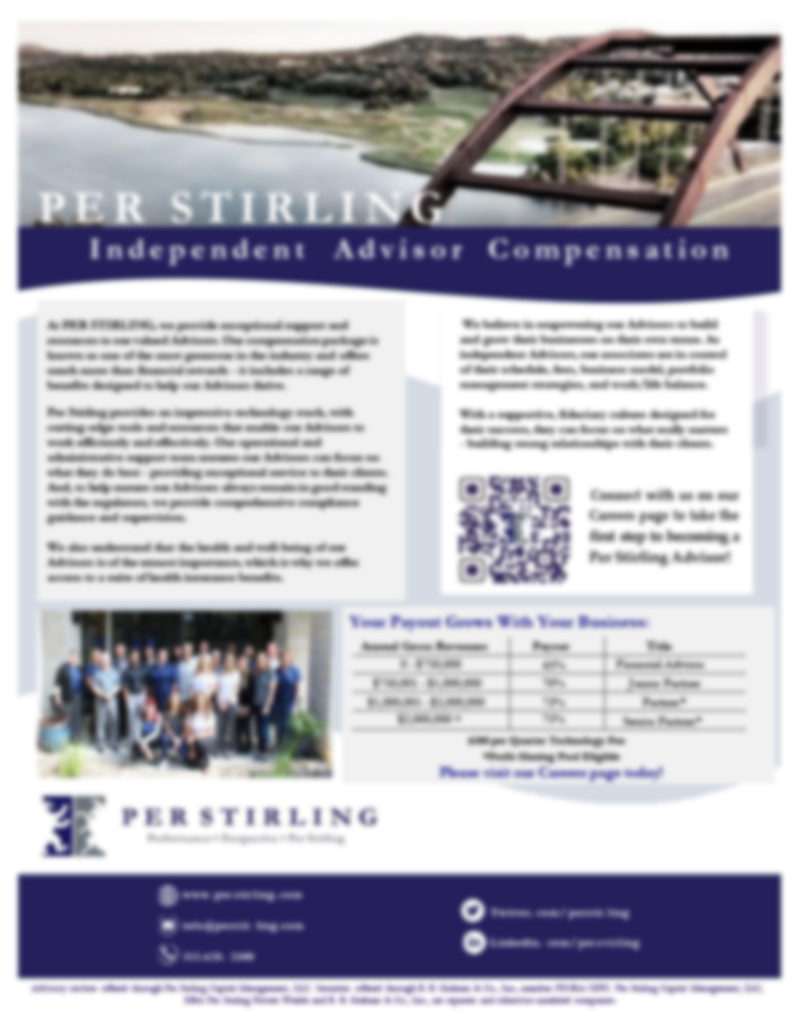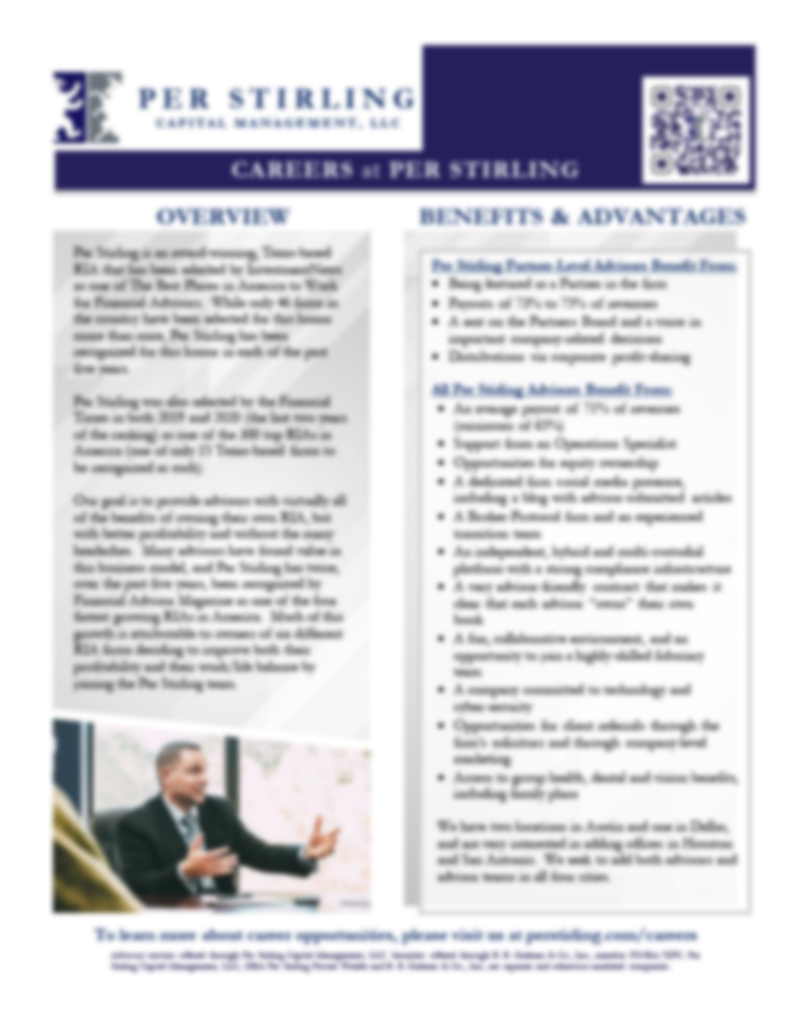23
JulyTax Planning Strategies for a Smart Retirement in Austin
It’s official: you’re retired. No more late-night emails, long meetings, or hectic schedules. There’s less work-related stress, but your finances might be more complex. You’ll have bills to pay and fun hobbies to explore. Do you know how you’ll fund your new lifestyle? Since you aren’t receiving a regular paycheck, you’ll likely draw from various sources, such as Social Security, retirement accounts and/or fixed-income portfolios to pay your expenses.
And, since the lifestyle that you enjoy in your golden years depends less on the amount of retirement income that you earn than on the amount of retirement income that you actually get to spend after taxes, having a sound retirement tax planning strategy can make a big difference.
If you’re considering retirement in Austin, there are a number of tax-related issues to consider, ranging from state income taxes to local sales taxes.
If retirement income is one side of the coin, then retirement expenses are the other side, and both must be considered when planning for one’s retirement. Factors such as your age, lifestyle choices and where you decide to retire are all important considerations.
This guide will help you understand some of the retirement income and tax planning factors that you should consider if you plan to retire in Austin.
6 Income and Tax Considerations as You Plan for Your Retirement in Austin
Dreaming of an Austin retirement? The vibrant city draws retirees for its warm climate, energetic atmosphere, and thriving food scene. However, it is not as inexpensive as it used to be, and factors such as housing costs, healthcare, inflation, and the overall cost of living are all important considerations as you weigh the pros and cons of retiring in Austin. Don’t forget to consider the impact of taxes, including both state income taxes and local sales taxes.
Here are six important retirement income and tax planning strategies to consider as you plan for your retirement in this beautiful city.
1. Be Strategic About Social Security Benefits
Your Social Security benefits can help keep you afloat during retirement in Austin. However, this income can be taxed, and understanding how much of your social security you actually get to keep net of taxes is critical to an effective tax planning strategy. Timing is also essential to maximize your benefits. A sound retirement income and tax planning strategy may mean waiting until you’re at least 67 to begin claiming these benefits. You can start claiming at 62, but withdrawals before “full retirement” age are reduced, while those who postpone the start of withdrawals benefit from larger monthly payments. Your Social Security benefits are designed to keep pace with inflation and are guaranteed until you die, providing consistent and dependable income to help fund your Austin retirement.
2. Optimize Your Investment Portfolio for Taxes/ Reassess Your Investments
Most retirees need to continue investing for growth as well as income, as the growth component of a portfolio helps to protect a portfolio from inflation. However, it is very important that people, especially those at or near retirement, not take on too much risk, as it is difficult to make up for portfolio losses once in retirement. In addition, outside of tax-deferred retirement accounts, it is important to remain tax-aware, as long-term capital gains are taxed much less heavily than short-term capital gains.
Municipal Bonds
For some retirees, especially those in higher tax brackets, municipal bonds might make sense. These are debt securities issued by states, counties, and government entities to fund daily obligations and finance projects such as constructing highways and schools. The interest income isn’t taxable at the federal level and is typically exempt at the state and local levels. Just remember that Texas doesn’t have a state income tax.
Dividend-Paying Stocks
Dividend-paying stocks are an attractive option for many retirees due to the income that they provide. While companies are generally not obligated to pay a specific dividend, they have historically been a very reliable source of retirement income. Dividends are paid out of the earnings and profits of the corporation and can be classified either as ordinary or qualified. According to the IRS, “whereas ordinary dividends are taxable as ordinary income, qualified dividends that meet certain requirements are taxed at lower capital gain rates”.
Losses That Offset Capital Gains
One tax-advantaged strategy to help fund an Austin retirement is to offset your capital gains with losses. A capital gain is when you sell an investment for more than you paid. Selling at a loss is called a capital loss. By offsetting your capital gains, you may reduce the amount of taxes you owe. This retirement tax planning strategy can help lower your tax obligations, save money, and reduce your tax bill.
3. Plan Your Required Minimum Distributions (RMDs)
RMDs are the minimum amounts you must withdraw yearly from your retirement accounts at a certain age. Current rules state that at age 73, you must withdraw a specific amount from your retirement accounts each year. This means you won’t keep Uncle Sam waiting by holding the funds in a tax-advantaged account for too long. By requiring these withdrawals, the IRS can make sure you eventually pay any taxes you owe. A financial professional can help you plan your RMD withdrawals and create a tax planned strategy that optimizes your income for your retirement in Austin.
4. Put Your Money in a Deferred Annuity
Want to fund your Austin retirement with a steady and predictable source of income, an annuity may make some sense. An annuity is a contract, typically with an insurance company, that distributes income after you make an initial upfront payment. With a deferred annuity, the earnings on your principal grow tax-deferred until withdrawn and generate a predictable income stream in retirement. As with most fixed-income strategies, inflation could reduce a retiree’s purchasing power over time.
5. Use Tax-Advantaged Accounts Before Retirement
If you’re planning a retirement in Austin, a tax-advantaged account can help maximize your savings. Most tax-advantaged accounts, like traditional IRAs and 401(k)s, grow tax-deferred. While all withdrawals are eventually taxed upon withdrawal, all other things being equal, tax-deferred accounts grow faster than annually taxable accounts, and that is in addition to the ability to invest your principal on a pre-tax basis. There are even tax-advantaged options that grow tax-deferred and are never taxed. We encourage you to discuss these options with your financial planner or investment advisor.
In the meantime, here is an overview of some popular tax-advantaged options worthy of consideration as you plan for your Austin retirement:
Roth Accounts
Contributions to your Roth IRA are from after-tax dollars so, while you do not benefit from the initial tax deduction, your investments grow tax-deferred and, as long as you meet certain requirements, you won’t ever pay taxes on your withdrawals. In contrast, with a regular IRA, you may be subject to taxes and an early withdrawal penalty if you withdraw funds before the age of 59½ and will be penalized if you don’t take your required distributions.
Taxable Accounts
Do your retirement tax planning goals include having access to additional liquidity or more investment options? If so, taxable accounts may help boost your retirement income in Austin. Remember that profits from dividend income or the sale of assets, such as stocks, must be reported to the IRS for tax purposes.
Health Savings Account
A health savings account (HSA) can be an effective savings vehicle if your employer offers it. That’s because contributions are tax-deductible, and the money in your account grows tax-free. Withdrawals for qualifying medical expenses are also tax-free, giving you a sound tax-planning strategy for your retirement in Austin.
6. Live in a Tax-Friendly State
Welcome to the land of no state income tax, which is of obvious importance as you plan for your Austin retirement. Most income sources are still subject to federal income taxes, and it should be noted that Texas has relatively high property taxes. Retiring outside of the major cities can help offset this expense. If retirement in Austin might be a stretch financially, consider these nearby alternatives.
- San Antonio – This Texas city offers an alternative to retirement in Austin. While an even larger city, San Antonio offers lower housing prices, walkable neighborhoods, and many active 55+ communities.
- Killeen – Thanks to more affordable housing options, living on a fixed income is easier here. For bigger-city amenities, Austin isn’t too far away.
- Georgetown – Besides an active arts and cultural scene, Georgetown features many parks and outdoor spaces for recreation. It’s an attractive alternative for retirees seeking a slower pace of life and within driving distance of Austin.
- Wimberley – An outdoor lover’s paradise for its rolling hills and natural beauty, Wimberley offers a quieter pace of life. It has a thriving local arts scene and a lower cost of living, but it’s still accessible to Austin.
7. Get Help If You Need It
Do you need help with your retirement income and tax planning strategy in Austin? From understanding how to spend your retirement nest egg to accounting for health and other life factors, there’s lots to consider. Planning a fulfilling retirement in Austin is possible with a clearly defined strategy to pursue your goals. A financial advisor can help you plan for your after-tax income needs and to help stretch your money in retirement.
Want To Work With a Retirement Income and Tax Planning Partner?
Retirement in Austin looks different for everyone. Factors such as your health, goals, and lifestyle can help determine your potential expenses. It’s also critical to consider tax implications, which can impact your budget. An seasoned financial professional can help you create a customized retirement strategy that reflects your specific needs. We’re here to help you preserve and manage your financial affairs according to your wishes.
If your goal is to plan for a fulfilling retirement in Austin, our advisors can help you create a plan to live the lifestyle you deserve. Contact our financial advisors if you need a partner to help make retirement tax planning an exciting part of your journey.
Citations
1. “What is full retirement age?” January 2, 2024. Social Security Administration. “https://faq.ssa.gov/en-us/Topic/article/KA-01885”.
2. Alwardt, Peter. January 29, 2024. “Required Minimum Distributions: An Update”. Eisner Amper. https://www.eisneramper.com/insights/employee-benefit-plan/required-minimum-distributions-update-0124/.
3. Wohlner, Roger. April 25, 2024. “How to Make Roth IRA Withdrawals Tax- and Penalty-Free”. Time. https://time.com/personal-finance/article/roth-ira-withdrawal-rules/.





